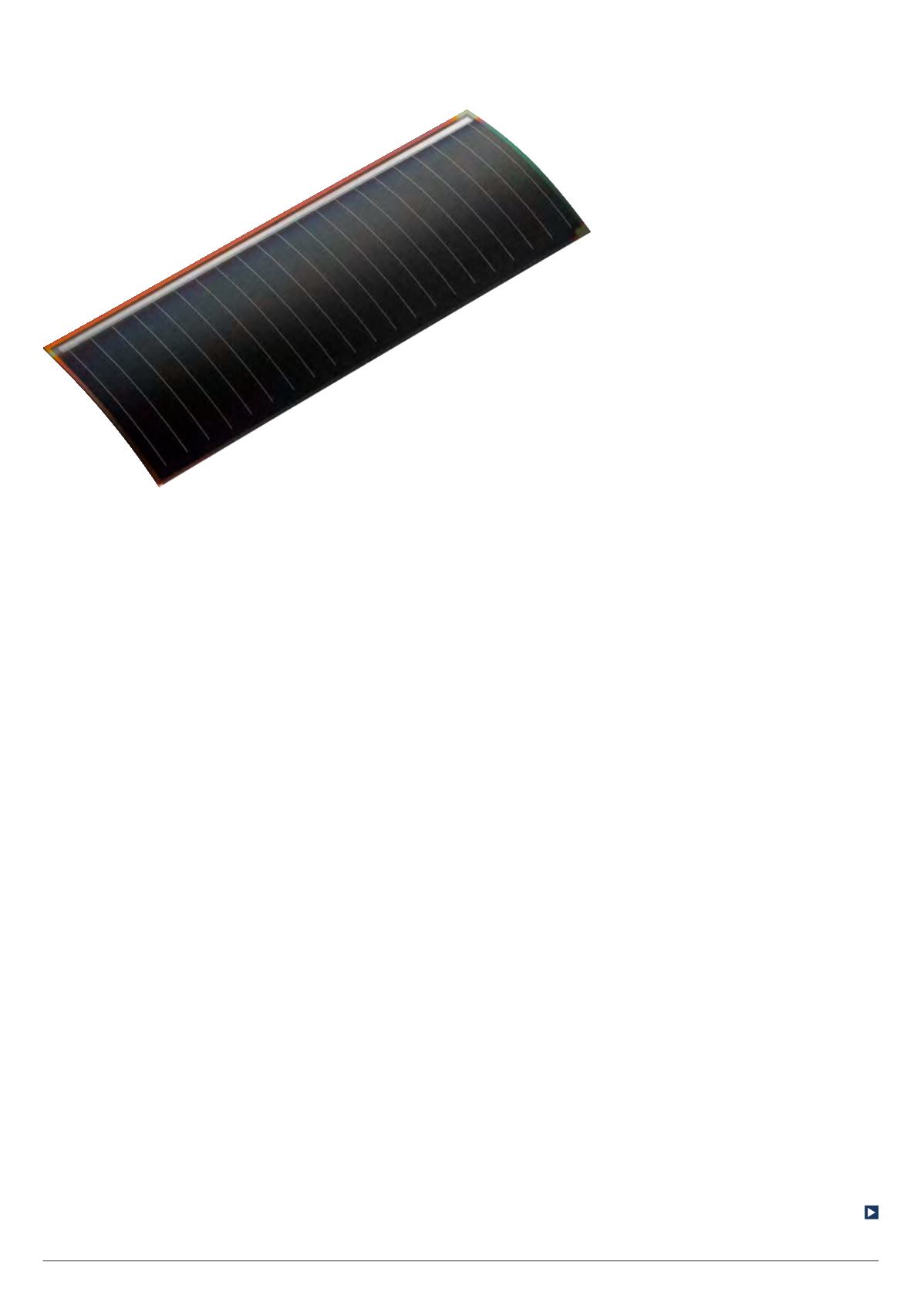

80
Focus
|
Solar power
idea of reducing general wear and tear on
UAVs through longer fights that replace
three or even four previously shorter
missions. Now that there are real products,
real services and real customers, the value
proposition starts to make sense.
As the manufacturer says, “As
everything, if you give them 10 Mbytes of
data they will say, ‘This is great, but can
you give me 20, or 100 is what I’d really
like to see.’ We’re always starved for data,
we’re always starved for technology, and
power is really the enabler for that. So
even in just the past year I think we’ve
seen people ready to embrace much
higher power at a bit of a higher dollar
rate because the systems are no longer
hobbies; they’re actually fight systems
that are demanding more service, and
our customers are willing to pay more.”
Solar power as an enabler
The large horizontal surfaces on
fxed-wing UAVs can accommodate a
signifcant quantity of solar cells. Aircraft
such as the NASA/AeroVironment Helios
demonstrated in the 1980s the potential
for solar cells to transform the wing from
a passive mechanical component into
a primary power source, or to provide
payload power with minimal impact on
aerodynamics. Recent improvements
in electric propulsion technology and
wireless connectivity are now driving
strong commercial interest in solar power
for UAVs of all sizes.
The dominant performance metric is
effciency, but there are other metrics that
are more relevant to UAV applications, such
as the power-to-weight ratio. The objective
of the UAV is to carry a payload, so any
excess weight detracts from this ability.
Since the solar panels are usually
integrated into cantilevered wings, their
weight can lead to an increase in the
aircraft’s weight because of increased
structural requirements. Therefore,
the power-to-weight ratio of the solar
technology being evaluated is a primary
consideration in a UAV application.
The total weight of the solar panel
system is the sum of the weight of the
cells themselves, plus the weight of
the protective packaging needed for
them to survive the expected operating
environment. Some cell technologies
need special thick or multi-layer
packaging for acceptable lifetimes. This
packaging can be heavy, so the total
weight of the solar sub-module needs
to be considered when comparing
technologies using power-to-weight ratios.
Another key metric is the power-to-
area ratio. Surface area is limited, even
on fxed-wing UAVs, so effciency is vital.
Some solar technologies have high
power-to-weight ratios but suffer from low
conversion effciencies, which can be a
handicap in UAV applications since the
available area for mounting the panels is
limited.
Increasing wing area purely to
accommodate additional solar power
may not pay off, owing to increased
structural weight and drag, and the
relative size of the individual solar
cells compared with the wing size also
becomes a consideration, with smaller
cells enabling higher packing densities.
The ability and willingness of the vendor
to provide customised sizes and shapes
of solar cells and cell assemblies to
ensure maximum use of the available
area is therefore important.
Choice of cells
There are more than 20 photovoltaic
technologies being actively pursued by
manufacturers and research groups.
Broadly, they can be divided into wafer-
based and thin-flm types. The relevant
wafer-based technologies for our
purposes here are crystalline Silicon (c-
Si) and Gallium Arsenide (GaAs), while
the thin-flm technologies are amorphous
Silicon (a-Si), Copper Indium Gallium
Selenide (CIGS) and those based on thin
Gallium-Arsenide (GaAs).
The vast majority of existing solar cells
and manufacturing capacity is of c-Si,
typically made from wafers 6 in wide.
The typical effciency of this technology
is about 17% (or up to 20% for some
newer versions of the technology) as
measured under standard test conditions,
but the effciency can drop off under real-
world operating conditions of elevated
temperatures and reduced illumination.
By contrast, thin-flm solar cells use
layers of semiconductor material that are
100 times thinner than c-Si wafers, so
these cells can potentially be made into
very thin and lightweight panels.
In terms of solar cell chemistry there
are three categories of cell. One is silicon,
as used typically on rooftop solar arrays.
It is a crystalline material, and you can
have single-crystalline or poly-crystalline
silicon, although usually the single-crystal
variety gives higher performance.
June/July 2016 |
Unmanned Systems Technology
A single solar cell (Courtesy of Alta Devices)









